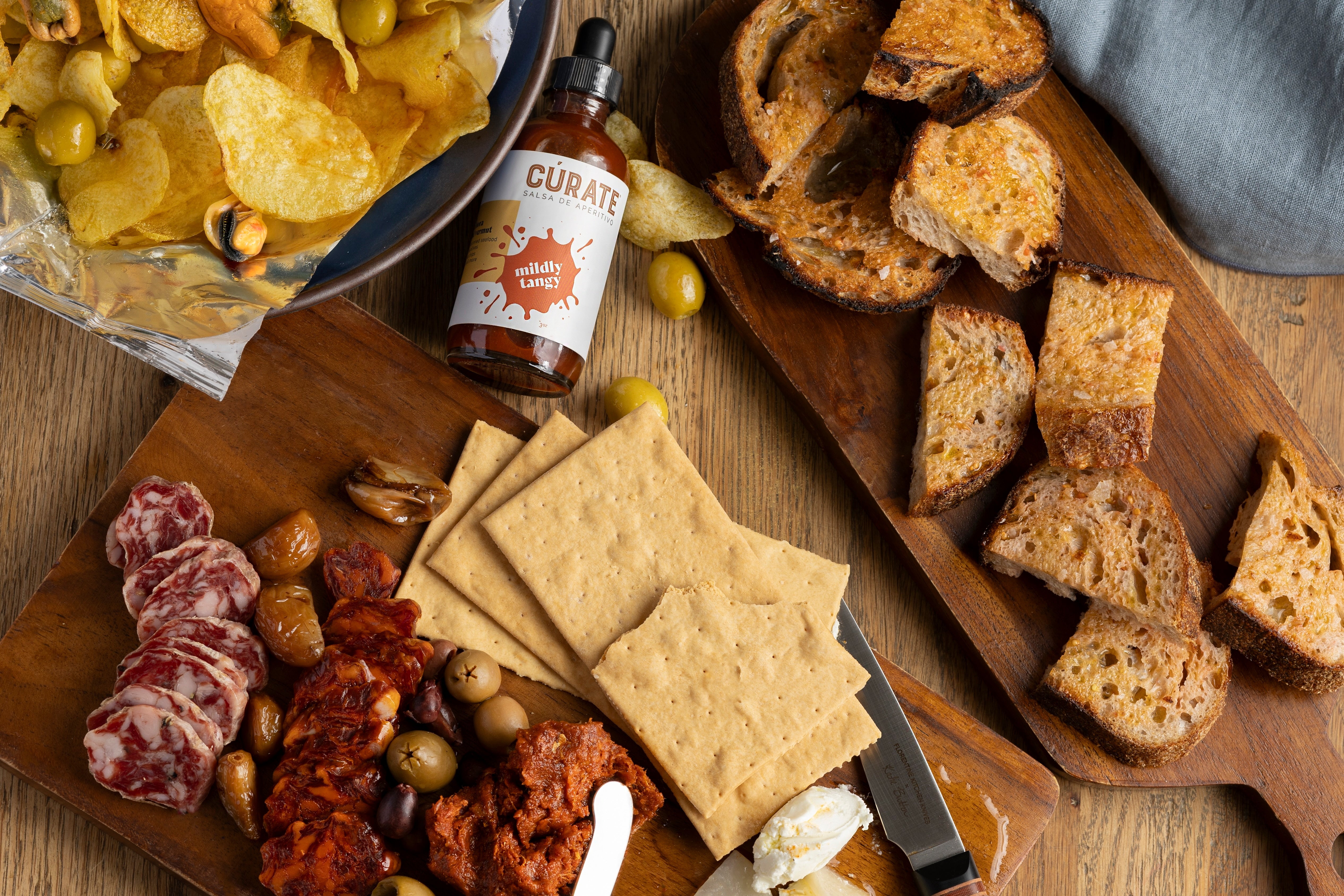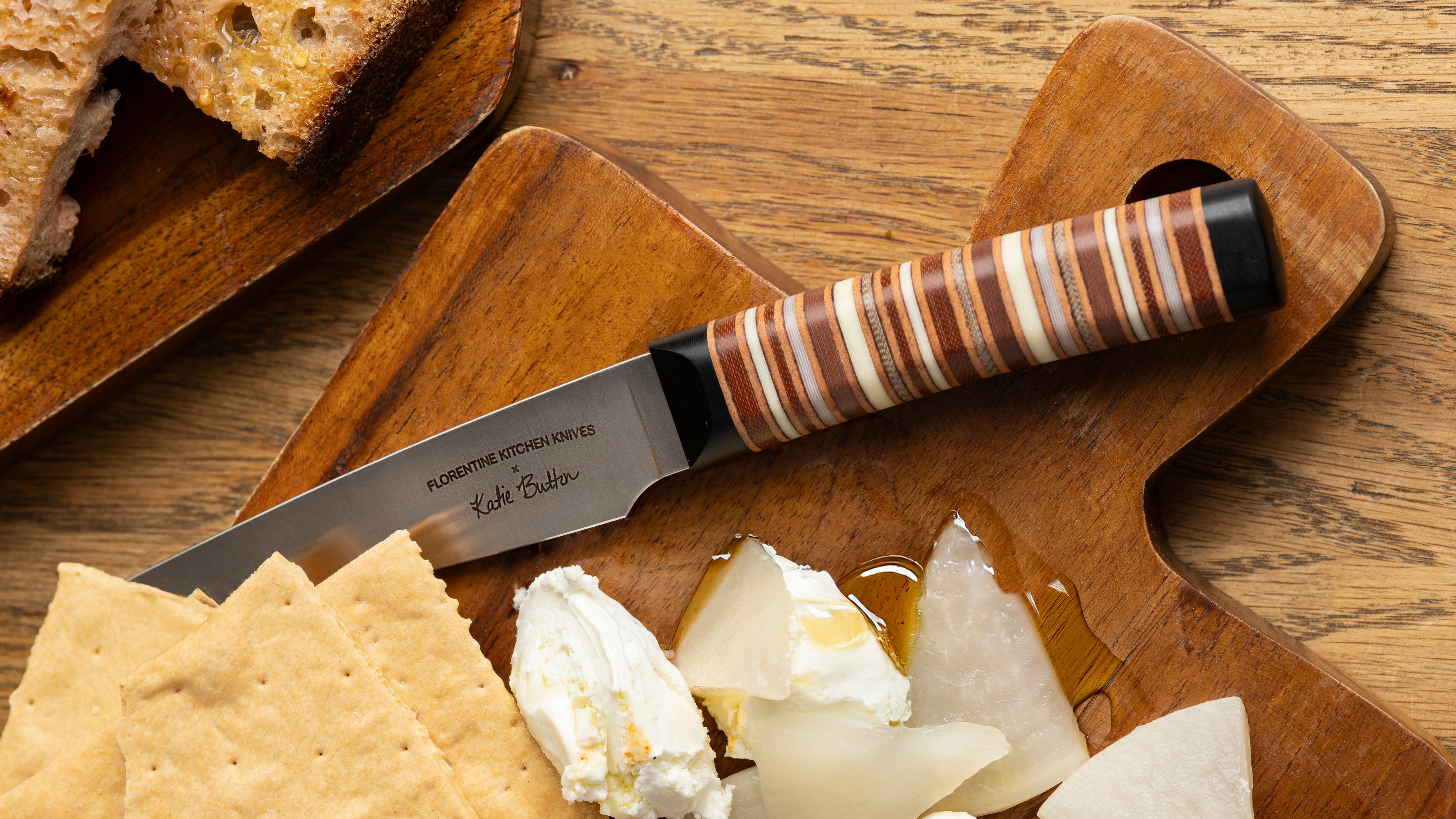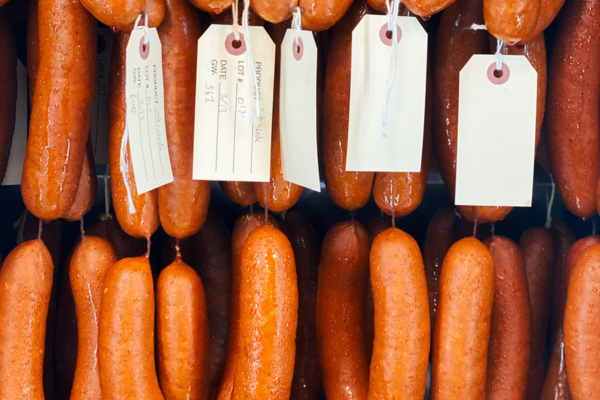Spain’s Craveable, Spreadable Cured Sausage
What is Sobrasada? Not to be confused with soppressata, which is very different. Let Cúrate introduce you to this spreadable, Mallorcan, cured sausage.
To begin, we’ll get Chef Katie Button’s input on the matter.
“As I write this, Cúrate produces 3 classic Spanish sausages, and I have a favorite, Cúrate Sobrasada! I love anything that spreads: soft cheeses, and butter being the obvious choices. When I first was introduced to sobrasada, the realization that charcuterie could be spreadable…I melted. Like, the overwhelmed-with-food-ecstasy fainting sort of melt that happens to the food-obsessed. Sobrasada, the incredible gift to humankind, originated in Mallorca. While traveling in Spain, I enjoyed sobrasada stuffed inside of croissants, spread on toast points and topped with foie gras and a quail egg, smeared on a baguette with goat cheese and honey, or my favorite, just by the spoonful. It’s impossible to find here in the states, so we set out to change that, croissants and all.”
Sobrasada, as a technique, has been around for centuries in the Balearic islands, specifically Mallorca. Most Spanish charcuterie has a distinct level of dryness which is due in part to the arid climate. However, the humid climate of the Balearic Islands made drying of cured sausages incredibly difficult before the modern tools we use to produce charcuterie. As a result, we get sobrasada, its high fat content and lower moisture content by way of muscle mean it is protected against pathogens without achieving the same type of moisture loss as a typical dry cured salami. This also means the texture of the final product is the characteristic spreadable texture famously associated with sobrasada. That does not mean, however, that sobrasada is not aged as long as other salamis, it actually means the opposite. Because of its high fat content, sobrasada is able to be aged for years without becoming rock hard, as its sliceable cousins would if submitted to similar processes. In fact, some massive sobrasadas (think 15-20 lb meat balloons) are aged as much as 3-5 years, achieving insane complexity of flavor as a result.
Around the end of the 17th century, this technique became its own distinct sausage when paprika was added to lend its signature color and flavor. The mild sweet flavor of pimentón really sets it apart from its spicier, Calabrian-chili-laced italian cousin ‘nduja, which is cured in a similar fashion.
A note on Pimentón
To understand the origins of sobrasada and chorizo, one must first know the story of pimentón and Spain’s introduction of many foods to the rest of Europe. A number of Spain’s most commonly used ingredients are those that originated from the Americas; i.e. peppers, potatoes, tomatoes, etc. This is primarily due to Spain’s heavy colonization of the “New World”, and the historical significance of Spain introducing these ingredients to the rest of Europe as a result. Pimentón specifically resulted when Columbus brought a number of peppers back from his third journey to America, and presented them as an offering to the Santa Maria monastery of Guadalupe in Extremadura. Over the years the monks perfected the art of smoking and drying these peppers to create pimentón and spread the process throughout Spain via Spain’s many monasteries.
If you are enjoying our Good Food Award-winning sobrasada, we recommend letting it come to room temperature first for optimal spreadability and texture. As much as we highly recommend Cúrate Sobrasada for snacking, it’s also a wonderful addition to countless recipes.
Below, we included a quick and easy, but impossibly decadent grilled cheese with Cúrate Sobrasada. Try it alongside scrambled eggs, or atop flatbread pizzas. We’re continually experimenting with this delightful, true-to-tradition delicacy!

Sobrasada Grilled Cheese
Ingredients:
4 pieces sourdough bread
1/2 cup goat cheese
1/2 link sobrasada
4 slices provolone cheese
1/4 cup butter
Method:
Using a butter knife, spread goat cheese on two of the pieces of bread, and spread sobrasada on the other two pieces. Lay the 2 slices of provolone cheese on top of the sobrasada and close each sandwich with a slice of goat cheese bread.
On the stove place a large skillet over medium low heat. Add a generous pat of butter to the pan and let it melt before adding the sandwiches. Add the sandwiches into the pan, and place a pat or two of butter on the top piece of bread while the bottom is toasting. Cook on each side until golden brown and crispy, About 5 minutes per side, adjusting the temperature to avoid burning the bread..
After 5 minutes on each side, the cheese should be melted all the way through. If not, turn the heat to low and place a lid over the pan, cooking for 2 additional minutes.

Sources:
- Christine McCleod, Cúrate Culinary Producer
- Jonathan Pridgen, Cúrate Head of Charcuterie
- Chef Katie Button, Owner and Co-Founder, Cúrate & Katie Button Restaurants
- https://theculturetrip.com/europe/spain/articles/a-brief-introduction-to-sobrasada-the-delicious-spanish-sausage/






Leave a comment